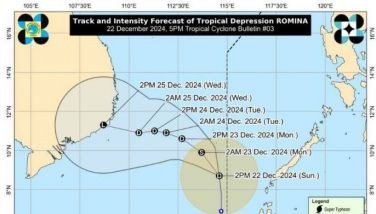Who are the authentic Philippine national heroes?
A hero is the nation’s personification of high levels of excellence in achievements for the country and for the peoples’ unification and development and the native land’s defense from external aggression and internal threats of subversion and treason. A hero possesses the uncommon qualities of courage, integrity, honor, and valor that inspire the people and become the pride of the nation before the world.
According to the 1993 Technical Committee on National Heroes, the following are the qualifications of a national hero. First, those who have the concept of a nation and for it, struggled for the life of the nation’s freedom. Second, those who by their ideas, work, and achievements, have contributed immensely to the system of freedom and peace for the nation and for that, they formulated the fundamental documents including the Constitution and other organic laws. Third, they must have contributed considerably to the promotion of better life for the nation and people. And, if we may add, heroes are those who offered their lives, their own happiness, and their resources, talent, and time for the greatest good of the nation and people. For these reasons, the OFWs were declared as modern heroes because of their tremendous sacrifices for family and nation.
In the Philippines, we usually name Dr. Jose Rizal, the greatest Malayan who ever lived, Gat Andres Bonifacio, the great plebeian and Father of the Katipunan; even Emilio Aguinaldo, the first president of the republic who declared the first independent nation in Asia; Apolinario Mabini, the sublime paralytic and brains of the revolution; Marcelo del Pilar, famous propagandist and editor of the La Solidaridad; Gregorio del Pilar, the boyish general and hero of Tirad Pass; Juan Luna, painter and political activist; General Antonio Luna, famous general of the Philippine Revolution; Melchora Aquino, healer and supporter of the Philippine revolutionaries; Diego and Gabriela Silang, leaders of the Ilocano Revolt; Lapulapu, the first Filipino hero; Sultan Muhammad Dipatuan Kudarat, sultan of Maguindanao and defender of Islam; Francisco Dagohoy, leader of the longest rebellion against Spain. Let’s add General Miguel Malvar, the last general to surrender to the Americans.
Actually, there are lesser-known heroes we should know about. First, General Martin Teofilo Delgado, the first Iloilo governor and a valiant leader against Spain during the Philippine Revolution. Second, General Jose Ignacio Paua, the one and only Chinese general against Spain. He was the one who crafted and repaired the cannons of Filipino warriors against Spain. Third is Trinidad Tecson, the Mother of Biak-na-Bato and Mother of the Philippine Red Cross, a woman warrior and healer of wounded Katipuneros. Fourth is Cesar Fernando Basa, hero of World War II, from Isabela, Negros Occidental. He was a pilot and the Basa Air Base was named in his honor. Fifth was Captain Jose C. Calugas, the first Filipino awarded the Medal of Honor for gallantry and victory over superior Japanese forces in World War II.
Sixth is Agueda Kahabagan, a woman general from Santa Cruz, Laguna, our version of France’s Joan of Arc. She figured in a famous fight against Spaniards when she joined General Artemio Ricarte in attacking the Spanish garrison in San Pablo, Laguna. She was always wearing white and armed with a rifle and a bolo. Seventh is Isabelo del Rosario, a musician and freedom fighter from San Fernando, Pampanga. He joined the Katipunan at a very young age of 23 and was given the monicker Kapitan Bikong. There were also famous women with heroic achievements, like Teresa Magbanua, Marcela Marcelo, Rosa Sevilla, Alvero, Maria Ylagan Orosa, Encarnacion Alzona, Josefina Guerrero, Remedios Gomez-Paraiso, and Magdalena Leones.
There are also other lists of unsung heroes which included Hadji Butu Abdul Bagui, the so-called prime minister of Sulu and the first Philippine Muslim senator; Pascual Hicaro, writer, editor, and translator; Datu Amai Pakpak, Maranaw warrior against Spain; Juan Palaris dela Cruz, leader of the so-called Palaris Revolt; Simeon Arboleda, a katipunero from Bicol; Panday Pira, the first Filipino cannon maker; Faustino Guillermo from Sampaloc, trusted hand of Gat Andres Bonifacio; the famous Tabal brothers Rafael, Anatalio, and Quintin, revolutionaries from Cebu along with General Arcadio Maxilom; and General Nicolas Godinez. My late father, L. Quirante Jimenez, was 17 years old when he was wounded in a hand-to-hand combat against the Japanese. He was awarded a medal by the US and lived in America as its citizen in the last 30 years of his life. He too was a hero, albeit unknown and unsung.
- Latest
























